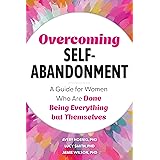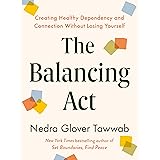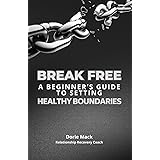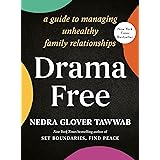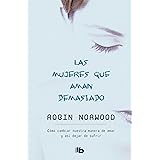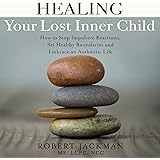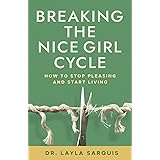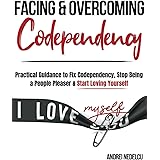It can often feel like a harmless pastime: the thrill of a new purchase, the satisfaction of a bargain, or the simple joy of browsing. However, as thoughtfully explored in the video above, what begins as innocuous retail therapy for some can spiral into a debilitating struggle with compulsive shopping for others. This condition, sometimes referred to as Oniomania or Compulsive Buying Disorder (CBD), is a deeply complex issue, impacting countless individuals and their families.
Consider a situation where shopping becomes a constant companion, a primary source of comfort, or even a perceived life partner. Such a scenario is not merely an indulgence but signals a profound emotional and psychological dependency. The true depth of this challenge is revealed when essential responsibilities are neglected, relationships are strained, and mounting debt becomes an unavoidable consequence.
Understanding Compulsive Buying: More Than Just “Retail Therapy”
Compulsive buying is fundamentally distinct from occasional overspending or indulging in “retail therapy.” While many people might experience a temporary mood lift from buying something new, a compulsive shopper finds this impulse almost irresistible. A deeply ingrained need to acquire items, often unnecessary ones, drives their behavior, regardless of the significant negative repercussions.
The compulsion is often described as a powerful internal voice or an overwhelming urge that overrides rational thought. These individuals frequently acknowledge the impracticality of their purchases, yet they feel powerless to stop. The pleasure derived from shopping is frequently fleeting, quickly giving way to feelings of guilt, shame, and regret, which subsequently feed the cycle.
The Silent Epidemic: Recognizing Compulsive Shopping
It is estimated that an astonishing 8 million people in the United Kingdom alone may grapple with a compulsive buying disorder. This significant figure underscores the widespread nature of a problem that is often kept hidden, contributing to its “silent epidemic” status. Many individuals suffering from this condition maintain an elaborate facade to conceal their spending habits from loved ones and even themselves.
Recognizing compulsive shopping involves observing patterns beyond mere financial extravagance. It includes hiding purchases, experiencing intense emotional distress when unable to shop, and allowing shopping to interfere with work, relationships, or financial stability. The problem is often dismissed as a character flaw or poor money management, which prevents proper diagnosis and effective intervention.
Unpacking the Psychology: Why Do People Become Compulsive Shoppers?
The roots of compulsive shopping are frequently found to run much deeper than a simple love for material goods. It is understood by many experts that this behavior is often a symptom of underlying emotional distress or unaddressed psychological needs. The act of buying becomes a coping mechanism, a temporary escape from difficult feelings or challenging life circumstances.
The Dopamine Surge: A Chemical Reward
When an individual shops and makes a purchase, a physiological reaction is often triggered within the brain. This response involves the release of dopamine, a neurotransmitter associated with pleasure and reward. The feeling of excitement or “rush” experienced during a shopping spree can be likened to the high felt by individuals with other forms of addiction, such as gambling or drug use.
This dopamine surge reinforces the shopping behavior, creating a powerful positive feedback loop. The brain learns to associate the act of buying with a pleasurable sensation, driving the individual to seek out that feeling repeatedly. Over time, a tolerance may develop, necessitating more frequent or larger purchases to achieve the same emotional effect.
Escaping Unhappiness: A Temporary Respite
Compulsive shopping is frequently used as a maladaptive coping strategy for feelings of unhappiness, loneliness, anxiety, or depression. The focus shifts from internal discomfort to the external act of acquiring something new. For a brief period, the act of shopping can provide a sense of control, excitement, or distraction from painful realities, creating a temporary respite.
However, this escape is invariably short-lived and does not address the core issues. As the initial thrill fades, the underlying unhappiness often resurfaces, sometimes intensified by the added burdens of debt and guilt. The cycle then perpetuates itself, as the individual seeks another shopping fix to alleviate the renewed emotional pain.
The Cycle of Guilt and Shame
Following the fleeting excitement of a purchase, a profound downward surge of negative emotions is commonly experienced. Feelings of guilt over excessive spending, shame about hidden purchases, and regret concerning financial repercussions can become overwhelming. This emotional aftermath is a hallmark of many addictive behaviors.
The awareness of one’s inability to control spending can also contribute to feelings of powerlessness and self-criticism. This emotional distress can further fuel the desire to escape through more shopping, creating a vicious and self-destructive cycle. The internal conflict between the desire to stop and the inability to resist the urge becomes a constant source of agony.
The Far-Reaching Impact: Beyond Financial Strain
The consequences of compulsive shopping extend far beyond merely emptying a bank account or accumulating credit card debt. While financial distress is a primary and undeniable outcome, the disorder also inflicts significant damage on various other aspects of an individual’s life. The repercussions often ripple outwards, affecting those closest to the shopper.
Strained Relationships
Secrecy and deception frequently accompany compulsive shopping, leading to significant trust issues within relationships. Partners, family members, or friends may feel alienated or secondary to the acquired items, as mentioned in the video. The financial instability caused by uncontrolled spending can also create intense conflict and resentment among household members, leading to profound emotional distance.
For example, if a person spends thousands of pounds on shoes, as one individual mentioned, while family needs are unmet, the impact on relationships is considerable. The emotional withdrawal and preoccupation with shopping can leave loved ones feeling neglected and pushed out, as if they are less important than the material possessions. This can erode the very foundation of close bonds.
Personal and Professional Consequences
The immense amount of time dedicated to shopping, whether online or in physical stores, often results in the neglect of other responsibilities. Work performance may suffer, social engagements might be canceled, and hobbies may be abandoned. The persistent stress of debt and secrecy can also significantly impact mental and physical health, leading to increased anxiety, depression, and even physical ailments.
The compulsion can become so all-consuming that it dictates daily life, limiting opportunities for personal growth and genuine connection. For some, like Dipna in the documentary, work might be canceled simply to facilitate a shopping spree. This prioritization clearly illustrates the pervasive control the disorder exerts over an individual’s life, demonstrating the severe disruption it causes.
Breaking the Cycle: Pathways to Recovery
Addressing compulsive shopping requires a multi-faceted approach, similar to other behavioral addictions. It is generally understood that merely stopping the act of shopping is often insufficient, as the underlying psychological and emotional issues must be thoroughly addressed. The journey to recovery is frequently challenging but offers the promise of a life no longer dictated by uncontrollable urges.
Acknowledging the Problem
The most crucial initial step in recovery is the recognition and acceptance of the problem itself. Denial is a massive barrier, as many compulsive shoppers do not see their behavior as problematic, often defining themselves by it. Admitting that shopping has become an addiction, rather than a mere hobby, is foundational for any progress to be made.
This acknowledgement can be incredibly difficult, often requiring external intervention or a critical moment of self-realization. However, once this hurdle is overcome, the path towards seeking and accepting help becomes clearer. The ability to articulate the problem is the first active step toward finding a viable solution.
Seeking Professional Support
Since compulsive shopping is often a symptom of underlying conditions, therapeutic interventions are typically aimed at resolving those deeper issues. A mental health professional, such as a therapist or counselor specializing in addiction, can provide invaluable guidance. Cognitive Behavioral Therapy (CBT) and other talk therapies are often employed to help individuals identify triggers, challenge destructive thought patterns, and develop healthier coping mechanisms.
Support groups, much like those for other addictions, can also provide a vital community where individuals share experiences and strategies in a non-judgmental environment. Medication may also be considered in some cases, particularly if co-occurring conditions like depression or anxiety are present. A holistic approach is often implemented, tailored to the specific needs of the individual.
Practical Strategies for Managing Urges
Beyond professional therapy, several practical steps can be implemented to manage the intense urges associated with compulsive shopping. These strategies are intended to create immediate barriers and develop healthier habits. This involves reducing exposure to triggers and building alternative, fulfilling activities.
For instance, implementing strict budgeting, avoiding tempting stores or websites, and unsubscribing from promotional emails can be highly effective. Creating a spending diary to track purchases and the emotions surrounding them can also foster self-awareness. Furthermore, finding new hobbies or spending more time on activities that genuinely bring joy, rather than just a fleeting rush, is extremely beneficial. The development of new coping strategies and a robust support system will ultimately help mitigate the power of compulsive shopping.


